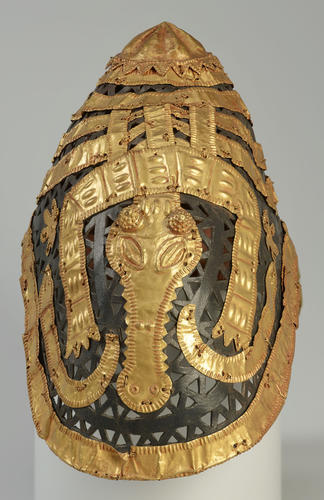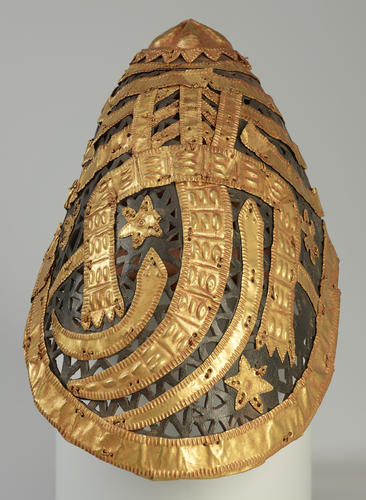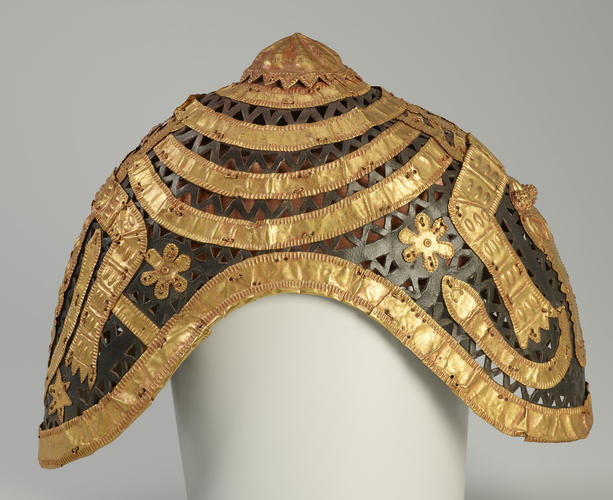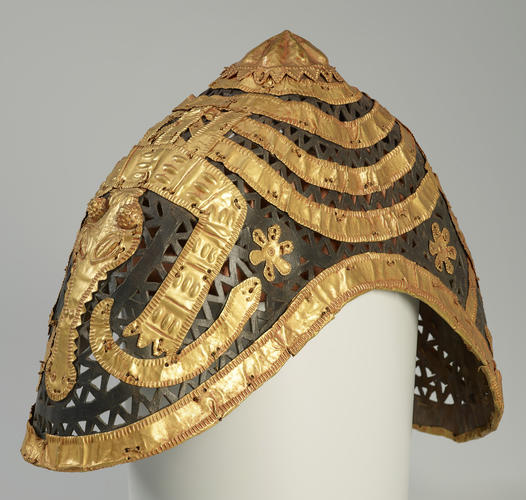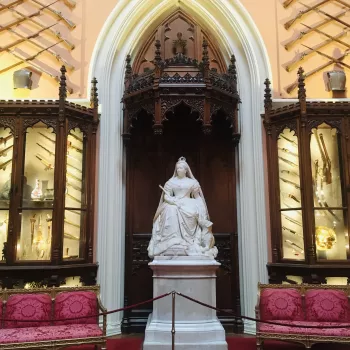Cap (krobonkye) nineteenth century
Leather, gold | 14.5 x 19.5 x 9.5 cm (whole object) | RCIN 62904
-
A kidney-shaped cap (krobonkye) of dark brown leather, probably antelope skin, cut in a latticework chevron pattern, with applied bands of thin hammered gold affixed by wire. The main strips are in the form of a crocodile decorated with regular repoussé indentation in imitation of scaly skin. To either side of the crocodile are two curved gold strips in the form of snakes and six six-pointed stars, the whole surmounted by a gold finial.
Caps of this kind were worn by state sword-bearers and other officials on important occasions. The crocodile may be a symbol of adaptability, admired in Ashanti culture for its ability to live in water, yet breathe air.Provenance
Said to have been taken from King Kofi Karikari, King of the Ashanti (c.1837-1884), at Kumasi. It is almost certainly one of the objects seized by British troops from the palace of the defeated Asantehene during the Anglo-Ashanti War of 1873-74. Numerous gold items and textiles were removed by Sir Garnet Wolseley's forces, while other gold pieces were paid to the British as settlement of the government's indemnity claim. Some of these objects were sold at a public auction in Cape Coast prior to the troops' return to England; others were bought by Garrard & Co. in London for £11,000 and sold by them in the spring of 1874.
The cap is first recorded in the Royal Collection in the North Corridor Inventory at Windsor Castle with the note, 'Taken from Coffee King of Ashantee at Coomassie' (no. 1205).
It is likely one of the 'curious specimens of rough working in gold of the Ashanti' described by General Ponsonby in a letter to Queen Victoria on 31 March 1874. Ponsonby wrote that the British officers 'consider it their duty as well as an honour to submit these articles - or the best of them to Your Majesty before publicly selling them.'
On 2 April 1874 the queen recorded in her Journal that she 'looked at some gold ornaments, huge gold masks, rings, bracelets & other ornaments brought from Coomassie [Kumasi], (all of pure gold), by officers & others, sent in as an indemnity. They are being sold for the benefit of the Army & I have bought some.' -
-
Medium and techniques
Leather, gold
Measurements
14.5 x 19.5 x 9.5 cm (whole object)
Place of Production
Ghana




